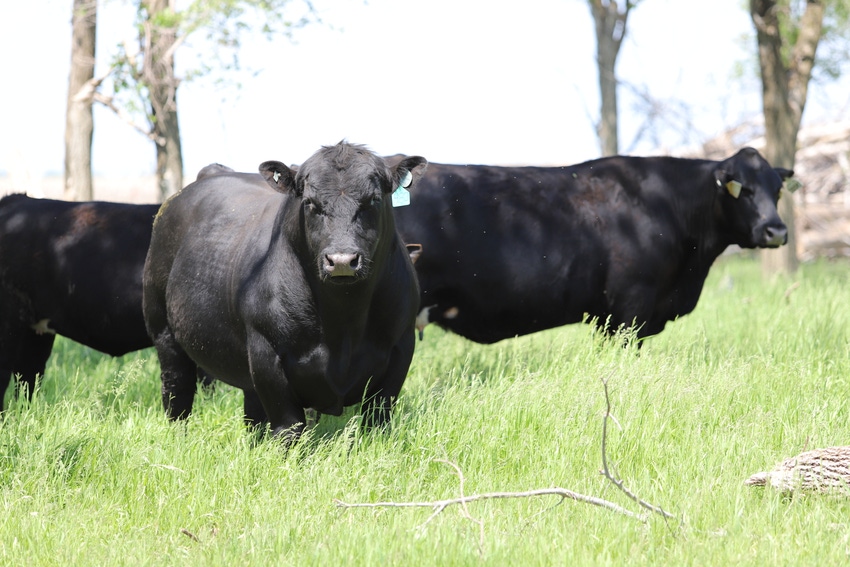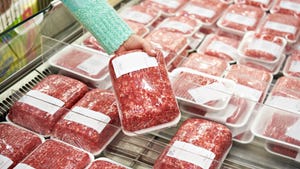Grazing for success; new course offers management strategies
A new course offered by Penn State provides tips for better land management to help producers make the most of every acre.
September 9, 2019

This week, the BEEF team is headed to Husker Harvest Days in Grand Island, Neb. In the next couple of days, you can catch us at the event in the Livestock Industries Building (lot 860) where I will be speaking about fake meats and what producers need to know. Burt Rutherford will talk about the beef business in this era of uncertainty. And Alan Newport will shares tips for grazing to achieve greater ranch profitability.
While I’m there, I will also be signing copies of my children’s books, “Levi’s Lost Calf” and “Can-Do Cowkids” at the Farm Progress booth. If you’re in Grand Island this week, I invite you to swing by our exhibit and say hello! The BEEF editorial team would love to connect with you!
READ: Husker Harvest Days to feature new beef programs
While I prepare to address the latest in emerging alternative protein options, one area I really want to highlight is how folly I believe these cell cultured proteins and veggie burgers really are. Instead, I want to celebrate what Mother Nature got right and how incredible the beef cow really is.
One way I accomplish this is by explaining how cattle not only provide nutrient-dense beef and life-enriching by-products, but how the amazing beef cow also utilizes land that would otherwise go to waste. This rangeland is too steep, hilly, rocky, dry, sandy or remote for modernizing or farming, but cattle can convert the cellulosic material (grass that is inedible to humans) and make protein-rich beef for us to enjoy.
What I’m finding is as ranchers, we not only need to promote beef and its benefits, but we also have our work cut out for us in making the beef cow cool again in the eyes of consumers.
After all, you can’t go a day without reading a cows and climate change article in the news. Everywhere you turn, plant-based diets are being promoted as the answer for reducing our carbon footprints.
It’s crazy, of course, and these headlines are not based on sound science or reality, but the issue remains — we must continue to battle this connection and remind consumers how cattle fit into the delicate balance of our planet’s ecosystem.
Of course, we as producers can always improve upon what we already do so well. Range management can take on all types of forms depending on where you live, the climate, the terrain, etc.
These management practices can include everything from rotational grazing to mob grazing to planting cover crops and more. In the weeks to come, I will try to present the current recommendations on these practices for producers to consider implementing in the upcoming year.
In the meantime, if you’re in the mid-Atlantic and Northeast region of the United States, you may want to check out a new online course titled, “Grazing 101: Sustainable Pasture Management for Livestock,” which is offered by Penn State University at the enrollment cost of $99. The course is designed for new and existing grazing managers who want to start raising or improve their management of beef cattle, sheep or meat goats on pasture.
Per a Penn State press release, “According to course co-developer Dave Hartman, a member of the Penn State Extension Livestock Team, pastures can exist in places where other crops cannot; therefore, they can add value to otherwise unproductive land. He noted that it can be daunting to think about where to begin as no two plots of land are exactly alike. As you choose a grazing system that will be a good fit for you and your livestock, you will want to consider your personal goals, time commitment and available resources.
“‘Going through the Penn State Extension online grazing course is a good investment of time and money,’ Hartman said. ‘Farmers who are new to grazing livestock will benefit from this course by gaining a basic understanding of the plant and animal aspects of grazing management. Those who already have experience grazing livestock will learn more about the science behind what they already may be observing in the field. It is this information that will help individuals sort out what is the best avenue for them to pursue in grazing management.’
“Forage quality is the basis of animal health in a grazing system and is impacted by plant development and the timing of grazing. This course will cover the practical aspects of designing a pasture system, such as the number of animals, paddock size and fencing type. Participants will learn about various types of grazing systems, such as rotational grazing, strip grazing and high-density grazing, as well as the benefits and challenges of each. There also will be an introduction to the costs associated with grazing and to opportunities for additional grazing-based income.
“‘In today’s world, there is a lot of available information about grazing management that can be very confusing and contradictory,’ Hartman said. ‘The Penn State Extension course is tailored for typical conditions in the mid-Atlantic and Northeast region of the United States. There is no one right way to manage grazing. This course will help you learn the fundamentals and decide what will work best on your farm.’
“In this self-paced course, participants will use a combination of readings, videos and handouts to learn the basics of raising livestock on pasture. Text will be a primary source of information, along with supplemental videos and knowledge-check questions. Each section of the course concludes with an opportunity to reflect on how to incorporate what was learned into a grazing operation. This course will provide participants with a practical, research-based foundation on which to build a successful and profitable grazing enterprise.
“‘One of our main goals is to have participants think about how they can incorporate information from the course into a practical plan for the grazing program they manage or are planning,’ said Jessica Williamson, extension forage specialist and co-developer of the course. ‘A nice feature of the course is having access to it whenever it is convenient to you as a participant. It also allows you to go back and review material based on something you see in the field during the grazing season.’
Once enrolled, participants will have access for one year to complete the course. To learn more and register, click here.
In this business, we are not just beef producers, we are grass farmers. How we utilize our rangeland not only helps us run cattle, but it also helps us make the most of every acre under our care.
The opinions of Amanda Radke are not necessarily those of beefmagazine.com or Farm Progress.
About the Author(s)
You May Also Like





